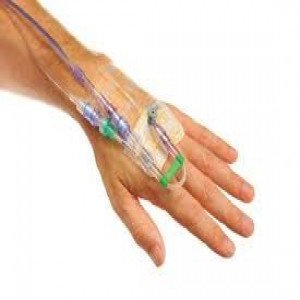 Welcome
Welcome
“May all be happy, may all be healed, may all be at peace and may no one ever suffer."
- A
- B
- C
- D
- E
- F
- G
- H
- I
- J
- K
- L
- M
- N
- O
- P
- Q
- R
- S
- T
- U
- V
- W
- X
- Y
- Z
Azithromycin Dihydrate - Brands
Azithromycin is acid-stable and can therefore be taken orally with no need of protection from gastric acids. It is readily absorbed; its absorption is greater on an empty stomach. Time to peak concentration in adults is 2.1 to 3.2 hours for oral dosage forms. Due to the high concentration in phagocytes, azithromycin is actively transported to the site of infection. During active phagocytosis, large concentrations of azithromycin are released. The concentration of azithromycin in the tissues can be over 50 times higher than in plasma. This is due to ion trapping and the high lipid solubility.
Azithromycin's half-life allows a large single dose to be administered and yet maintain bacteriostatic levels in the infected tissue for several days. Following a single 500 mg dose, plasma concentrations of azithromycin declined in a polyphasic pattern with a mean apparent plasma clearance of 630 mL/min and a terminal elimination half life of 68 hours. The prolonged terminal half-life is thought to be due to extensive uptake and subsequent release of drug from tissues. Biliary excretion of azithromycin, predominantly unchanged, is a major route of elimination. Over the course of a week, approximately 6% of the administered dose appears as unchanged drug in urine.
Microbiology: Azithromycin acts by binding to the 50S ribosomal subunit of susceptible microorganisms and, thus, interfering with microbial protein synthesis. Nucleic acid synthesis is not affected. Azithromycin has been shown to be active against most isolates of the following microorganisms, both in vitro and in clinical infections:
- Aerobic and facultative gram-positive microorganisms: Staphylococcus aureus, Streptococcus agalactiae, Streptococcus pneumoniae, Streptococcus pyogenes
- Aerobic and facultative gram-negative microorganisms: Haemophilus ducreyi, Haemophilus influenzae, Moraxella catarrhalis, Neisseria gonorrhoeae
- Other microorganisms: Chlamydia pneumoniae, Chlamydia trachomatis , Mycoplasma pneumoniae , Betalactamase production should have no effect on azithromycin activity.
- Aerobic and facultative gram-positive microorganisms: Streptococci (Groups C,F,G), Viridans group streptococci
- Aerobic and facultative gram-negative microorganisms: Bordetella pertussis, Legionella pneumophila
- Anaerobic microorganisms: Peptostreptococcus species, Prevotella bivia
To be happy, beautiful, healthy, wealthy, hale and long-lived stay with DM3S.


